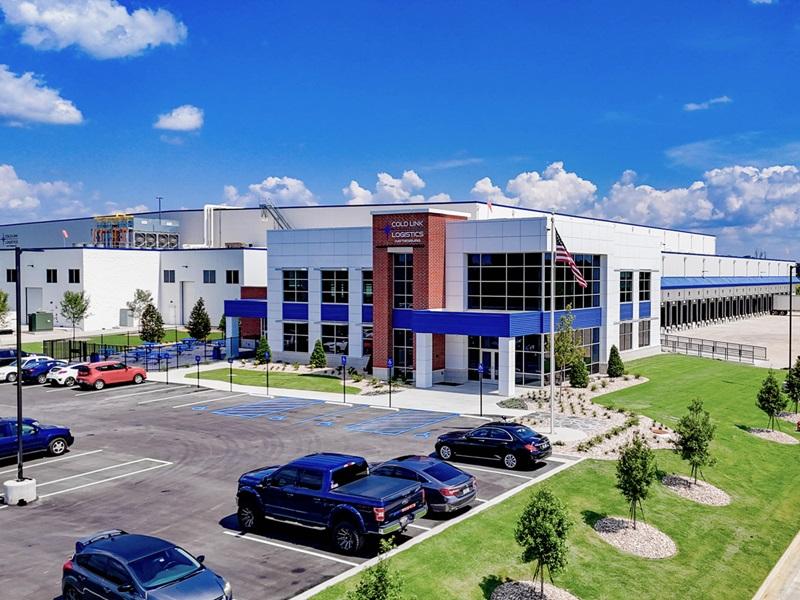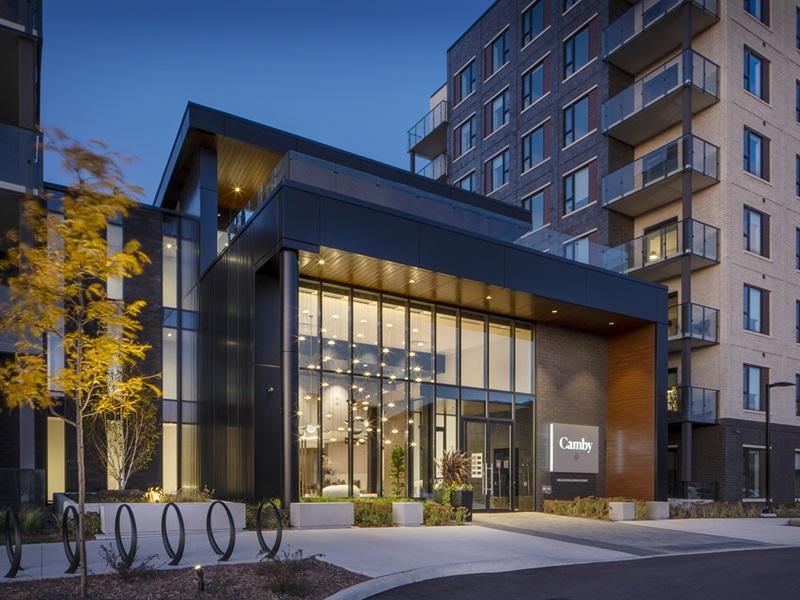
Michael Betsalel, JLL’s executive vice-president, capital markets, multifamily. (Courtesy JLL)
Transactions in the multifamily asset class largely came to a halt in the spring due to COVID-19, but deal volume has picked up through the summer and early fall.
Five executives discussed issues related to the topic during a virtual panel moderated by Realstar Management Partnership managing director of investment management James Wilson during the Canadian Apartment Investment Conference earlier this month.
JLL executive vice-president Michael Betsalel said landlords were focused on internal operations, protecting their staff and tenants, and looking at their next steps from March through May as deal-making slipped well down priority lists.
“The majority of the properties that we were about to bring to market were held back and then we sold them on a direct basis. They weren’t necessarily marketed. They were quasi-available. We were happy to market them later on down the road.
“But, if we found someone who wanted to pursue the asset now and was qualified, we were prepared to entertain that. Will the vendor achieve maximum value in that kind of process? Maybe not.
“But, maybe they’re happy to achieve a certain range of value that was within their threshold. And particularly, given the times, having available cash on hand — whether it was 95 or 98 per cent of the originally underwritten pre-COVID value — was acceptable to them without any risk.”
Goodman Commercial Inc. principal Mark Goodman said it usually takes no more than a month to do due diligence on properties, but timelines were extended to allow buyers to complete reviews, deal with the Canada Mortgage and Housing Corporation and building inspectors and appraisers, which took more time due to COVID-19 restrictions.
Current multifamily market
Betsalel believes some long-time private owners of apartment buildings may not want to deal with new management challenges associated with COVID-19 and could put their properties on the market.
“The greatest drop-off in demand, in terms of the number of bidders for deals, is for buildings that are downtown with high rents,” said CBRE VP and national apartment group co-leader Marc Hetu.
“These were the buildings that were the most sought-after pre-pandemic, by far, by every buyer type.
“But, at the end of the day, these buildings are student-dependent and downtown worker-dependent, and they’re also now under pressure from thousands of Airbnb units that are now entering the rental market. They’re very nice units in new buildings and are furnished, so it adds another level of competition.”
While Betsalel said interest has fallen off slightly in value-add properties, Hetu said the opposite was the case in urban areas.
“They’re typically purchased by private investors and I don’t have enough to satisfy the level of interest in that type of property.”
Hetu said suburban buildings haven’t experienced a change in demand and he hasn’t seen any policy or strategy shifts by major investors looking to move from downtown to the suburbs.
“You can’t lose by buying downtown Toronto, Montreal or Vancouver concrete high-rise apartment buildings,” said Betsalel, who noted there’s been a flight to quality and security by investors.
David Bloomstone, director of TD Securities’ investment banking real estate group and head of its multiresidential property brokerage, said most multifamily investors are in it for the long haul and said people will come back to the heart of major cities where jobs and other benefits are.
“The more savvy and sophisticated operators will really have to fine-tune turnover to unlock value because it’s a really challenging time to get turnover today,” said Bloomstone.
Bloomstone hasn’t seen prices impacted, noting there have been a couple of sales above pre-COVID-19 levels.
Vancouver multifamily market

Mark Goodman, principal of Goodman Commercial in Vancouver. (Courtesy Goodman Commercial)
Vancouver-based Goodman said multifamily rent collections have been in the high-90 per cent range in the city and that helped contribute to multiple offers on building and land listings over the summer.
While sales were down 36 per cent in the first six months of the year compared to 2019, Goodman said slow activity in the suburbs brought the number down. Vancouver experienced a large increase in dollar volume due to four major concrete high-rise transactions, and the average price per unit in Metro Vancouver increased by 20 per cent through the first six months of the year to approximately $442,000, according to Goodman.
“We’re extraordinarily optimistic in B.C.,” said Goodman. “The supply-demand imbalance that we see is not going anywhere.
“With cheap money right now, there is a flight to safety. It’s less about wealth creation and now, for a lot of people, it’s about wealth preservation.
“We have a lot of groups coming into our market that have never invested in multifamily and want a place to put their money. We have a lot more listings than we normally have and the buyers are coming back. 2021 is going to be a very busy year for us.
“Whenever you push pause on the economy for that long and you open it up, trades are going to happen. We’re optimistic about more liquidity in the market moving forward.”
Alberta and Quebec markets
The apartment vacancy rate in Alberta is close to five per cent and could rise to seven or eight per cent.
Betsalel said there haven’t been enough transactions in Alberta to comment on price-per-door and cap rates. The majority of deals that were done may have been firmed up pre-pandemic.
A number of unlisted, off-market, smaller deals worth less than $5 million have been done in Alberta, according to Betsalel.
Montreal-based Hetu said Quebec has large infrastructure projects moving forward, which adds momentum to the provincial economy.
He’s monitoring to see if the province’s technology sector will continue fuelling demand for apartments and offset the hit the aerospace industry will experience.
“I would encourage private investors to go after those big trophy deals that perhaps in the past they thought were inaccessible,” said Hetu.
“Now that interest rates are so low and they might not have as much competition, if they have a long-term strategy I think that’s the way to go.”
Future expectations for the sector
Every time there’s a threat to value in multifamily, prices go up, according to Betsalel.
Betsalel said demand remains strong from institutional and private capital for properties with existing cash flow and the multifamily class is desirable because it’s stable, can be financed and has strong spreads.
Since we’re in a cycle of long-term low interest rates, Betsalel thinks institutional demand for multifamily will continue despite the shorter-term impact of lower immigration.
“We’re getting calls every day from new investors that may have owned other types of assets that want to buy apartments,” he said.
Bloomstone said sophisticated apartment operators using technology to provide services to existing tenants and attract new ones with money will benefit.
Storage for delivered hot and cold food will become more important, as will high-speed wireless Internet since more people are expected to work from home.
“COVID has proven that multires is the shining star for all asset classes right now,” said Bloomstone.
“Buyers in the market today will stretch on pricing because they recognize the value of multires. I think it will be extremely difficult for new buyers to enter the marketplace.”
Hotel conversions to multifamily
Close to 50 per cent of hotels shut down at the height of the spring COVID-19 crisis and, while most have reopened, they’re operating at well below former occupancy levels.
Hotels relying on business and convention travel have been hurt more than those catering to leisure travelers.
Alam Pirani, Colliers International’s executive managing director of hotels, said there was $1.2 billion in Canadian hotel transaction volume by August 2019, but just $560 million this year.
A number of hotels were bought by B.C. housing agencies for homeless shelters or similar uses, he added.
Several hotels were converted to student housing during the financial crisis that began in 2008 and Pirani believes converting hotels to apartments is a viable alternative as long as zoning and code requirements are met.
Practical challenges include having enough electrical power, adequate water supply and kitchenettes, he added.
Pirani said the majority of hotels converted to multifamily were originally apartments; they were converted to hotels during good times and then converted back.
Since apartment suites are generally larger than hotel suites, a drop in room counts for conversions can make the economics of such a move difficult to justify.











